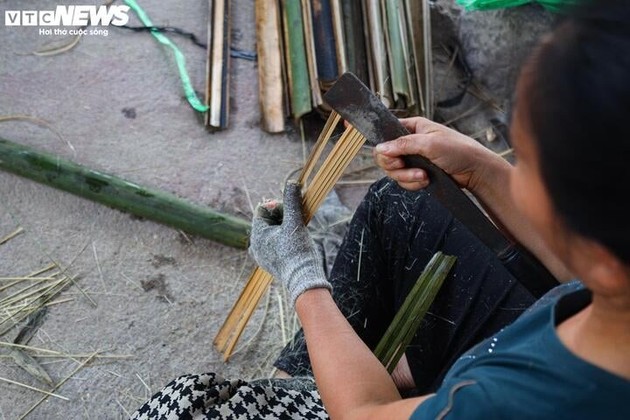
Over 30km from central Hanoi, Quang Phu Cau village is known for its century-old incense-making craft. As Tet approaches, locals are busy producing goods for the holiday.
|

Incense sticks are made from bamboo, which is soaked in a pond for 1-2 months before being washed and dried.
|

Bamboo for incense sticks must be carefully chosen and at the right age.
|

Once dried, the bamboo is hand-split, stripped, and shaved.
|

Today, with technological advancements, many households use machines to boost productivity.
|

"Sticks are more expensive if done by hand," explained an incense maker.
|

High-quality incense sticks are dyed and then sun-dried.
|

These beautiful "flowers" can be seen everywhere in the streets and alleys.
|

To attract tourists, many households arrange the incense stick bundles into shapes like the red flag with a yellow star, the national flag of Vietnam.
|

Incense sticks at Quang Phu Cau village are usually dyed pink or red, depending on customer orders. Red-dyed incense is typically used in temples, while pink-dyed incense is used in homes.
|

According to locals, incense making happens year-round but becomes especially busy in the final months of the year.
|

After drying, the incense sticks are bundled into 3kg packs and sent to incense production facilities across the country. In addition to supplying nationwide facilities, Quang Phu Cau village also has its own incense-making facilities.
|

Made with herbs like agarwood, pine, star anise, cinnamon, and canarium tree resin, along with a secret blending method and careful craftsmanship at every stage, Quang Phu Cau incense is considered by many to be both beautiful and long-lasting.
|

Traditionally, rolling incense required meticulous and careful work. Now, with modern technology and machines, this process has become easier and more efficient.
|

After drying, the incense is packaged and sold for 1.4–1.6 USD per kilogram.
|